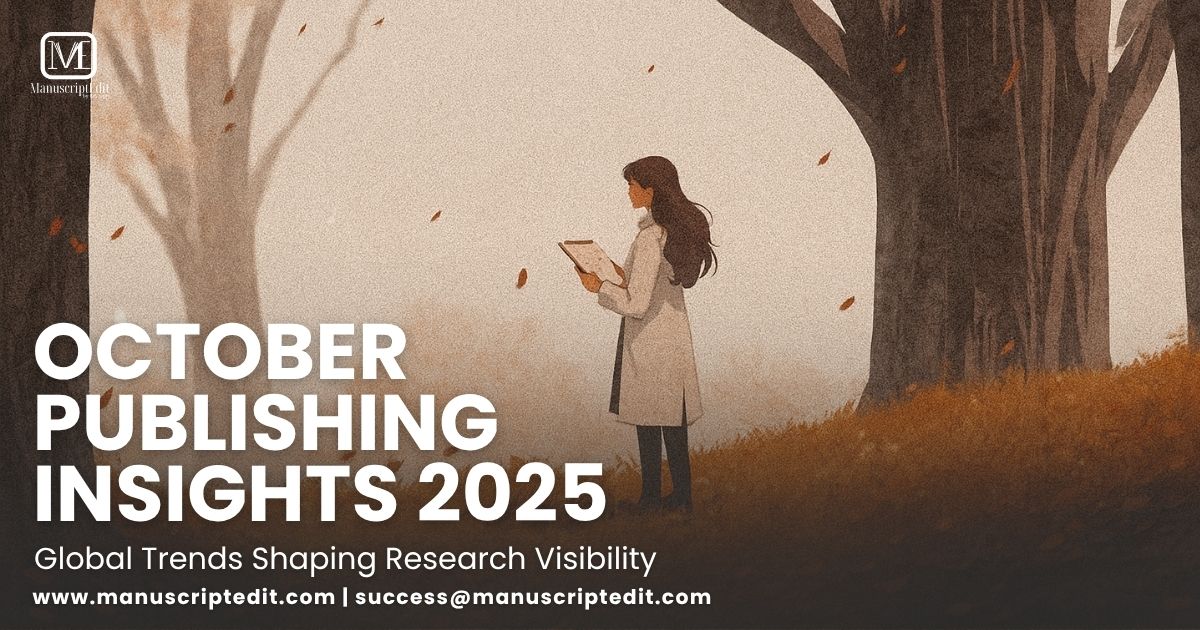Scholarly publishing is evolving fast: open access is expanding, funders are tightening public-access rules, preprints are normalising rapid dissemination, and AI is changing how manuscripts are prepared and evaluated. For researchers and research managers, the practical question is simple: what should we do this month to boost visibility and minimise risk? Below we summarise the most material shifts—and how ManuscriptEdit helps you navigate them.
1) Open Access is no longer optional—it’s strategic
Across the last decade, gold open access (OA) has grown from a niche to a mainstream route. A 2024 analysis from STM shows the share of global articles available as gold OA rose from ~14% (2014) to ~40% (2024). Major publishers report similar trajectories; for example, Springer Nature reports 240k OA articles in 2024 (31% YoY growth). Budget for OA strategically rather than reactively paying APCs. Build OA into the publication plan at the journal-selection stage.
How ManuscriptEdit helps: We map your target journals against OA options and policies, and pressure-test your shortlist for fit, scope, and budget—before you submit.
2) Funders (especially in the US) are tightening compliance
NIH has published an updated Public Access Policy (2024) moving to immediate public availability in PubMed Central upon publication for manuscripts accepted on/after 1 July 2025. NIH has also clarified peer reviewers must not use AI to generate critiques.
How ManuscriptEdit helps: We run a funder-policy compliance check, ensure your AAM and metadata are PMC-ready, and align data-sharing and rights statements with funder language.
3) APAC’s research engine keeps gaining weight
Asia–Pacific continues to contribute a growing share of global output and economic momentum. For publishers and authors alike, this means greater competition for attention—but also larger audiences for region-relevant work.
How ManuscriptEdit helps: Our editors specialise in smoothing readability for international audiences while preserving technical precision.
4) Preprints are now part of the mainstream dissemination stack
Preprints accelerate visibility and feedback. New studies indicate that preprint-distributed papers often see higher citation impact once journal-published. But preprints are not peer-reviewed and should not drive clinical practice.
How ManuscriptEdit helps: We prepare preprint-grade versions (tight abstracts, polished figures, clear limitations) and then upgrade the same manuscript for journal peer review.
5) AI is here—but integrity and accountability still hinge on humans
Large language models are increasingly used in drafting and polishing academic text. But COPE is clear: AI tools cannot be authors, and their use must be transparently disclosed. NIH also prohibits AI use in peer-review critique writing. Meanwhile, publishers are collaborating via STM’s Integrity Hub to screen for paper-mill risks.
Our stance at ManuscriptEdit: We use AI as an assistive layer—never a substitute for human expertise. Every deliverable undergoes expert review, with documented transparency where required.
6) The most common, fixable barriers to acceptance—this month
Despite these macro shifts, rejection reasons remain constant: poor clarity and flow, mismatched journal scope, weak response-to-reviewers, and compliance mis-steps.
How ManuscriptEdit helps: Rapid Journal-Fit Review, Substantive Editing, Revision & Response Packages, and Compliance Checks.
A practical publishing plan for the next 30 days
Week 1: Confirm target journals and OA strategy.
Week 2: Post a preprint with clear limitations; prepare the journal submission.
Week 3: Submit and prepare response-to-reviewers framework.
Week 4: Finalise AAM and repository deposit; respond quickly to revision requests.
Bottom line
Open access will keep growing; funders will expect faster, freer access; APAC’s share of output will rise; and preprints will further normalise rapid dissemination. AI will be part of scholarly workflows—but integrity, accountability, and quality still depend on humans. That’s why ManuscriptEdit combines expert human editing with careful, transparent AI use—so your work is clear, compliant, and credible from preprint to publication.
Click Here to read more such interesting blogs.



